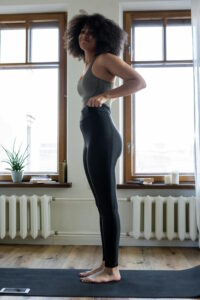
The choice between Pilates and yoga often perplexes those seeking to enhance their physical and mental well-being through mind-body practices. While both disciplines offer numerous benefits, they are distinct in their approaches and objectives. In this exploration of Pilates vs. Yoga, we’ll delve into key differences between the two practices, helping you make an informed decision about which one aligns better with your goals and preferences.
What Makes Pilates Different from Other Exercise?
Pilates stands out from conventional exercise methods in several ways:
1. Focus on Core Strength: Unlike many traditional workouts that primarily target individual muscle groups, Pilates emphasizes core strength. It engages the deep abdominal muscles, lower back, and pelvic floor, promoting overall stability and alignment.
2. Mind-Body Connection: Pilates encourages a profound mind-body connection. Practitioners are taught to concentrate on precision, control, and breath during exercises, fostering mindfulness and awareness.
3. Low-Impact Nature: Pilates is inherently low-impact, reducing strain on joints and minimizing the risk of injury. This makes it accessible to a wide range of individuals, including those with physical limitations.
4. Equipment Variations: While Pilates can be performed on a mat, it often incorporates specialized equipment like reformers, cadillacs, and barrels. These devices provide resistance and support to enhance the effectiveness of exercises.
5. Functional Fitness: Pilates is designed to improve functional fitness, enhancing one’s ability to perform everyday movements with ease. It focuses on movements that translate into better posture, balance, and body mechanics in daily life.
What is More Difficult: Pilates or Yoga?
The level of difficulty between Pilates and yoga largely depends on individual preferences, goals, and fitness levels. Neither practice is inherently more challenging than the other; instead, they offer different challenges:
· Pilates is often considered more intense in terms of physical exertion, particularly when using specialized equipment. It targets core strength, which can be demanding, and incorporates a wide range of movements that may require coordination and balance.
· Yoga, while it can also be physically challenging, places a strong emphasis on flexibility, balance, and holding poses. The difficulty level can vary significantly based on the style of yoga practiced, with some forms being more vigorous and others more restorative.
Ultimately, what’s “more difficult” is subjective and varies from person to person. Some may find Pilates suits their fitness goals and preferences better, while others may gravitate towards the spiritual and meditative aspects of yoga.
What is the Difference Between Yoga and Pilates Breathing?
Breathing plays a crucial role in both yoga and Pilates, but the techniques differ:
· Yoga Breathing (Pranayama): Yoga often incorporates specific breath control techniques called pranayama. These techniques vary in style and intensity but are designed to influence the flow of energy (prana) in the body. Breath in yoga is often synchronized with movement and is an integral part of the practice.
· Pilates Breathing: In Pilates, the emphasis is on lateral breathing, which means you breathe into the sides and back of the ribcage. This type of breathing helps stabilize the core and maintain control during exercises. Pilates also emphasizes exhaling fully to engage the deep core muscles.
While both practices prioritize mindful breathing, the specific techniques serve different purposes and align with the objectives of each discipline.
What is the Key to Pilates?
The key to Pilates lies in several fundamental principles:
1. Core Engagement: The core is the powerhouse of Pilates. Engaging and maintaining core strength and stability is essential for performing exercises effectively and preventing strain.
2. Control: Pilates emphasizes controlled, precise movements. Practitioners should move with deliberate intention, avoiding jerky or uncontrolled motions.
3. Concentration: Concentration and mental focus are vital in Pilates. Being fully present during the practice enhances awareness of movement, form, and breath.
4. Breathing: Proper breathing is integral. Pilates incorporates lateral breathing to support movements and engage the core muscles effectively.
5. Flow: Exercises in Pilates are often performed in a flowing sequence, promoting graceful and continuous movement.
6. Alignment: Maintaining proper body alignment is crucial for safety and effectiveness. Pilates encourages awareness of posture and alignment throughout each exercise.
Summarizing the Answers
In summary, Pilates and yoga are distinct practices, each with its unique benefits and characteristics. Pilates focuses on core strength, functional fitness, and controlled movements, making it stand out from conventional exercise methods. The difficulty level between the two practices is subjective and depends on individual preferences. Yoga emphasizes flexibility, balance, and breath control, while Pilates prioritizes core engagement and mindful movement. Understanding the differences between Pilates and yoga can help you choose the practice that aligns best with your fitness and wellness goals.